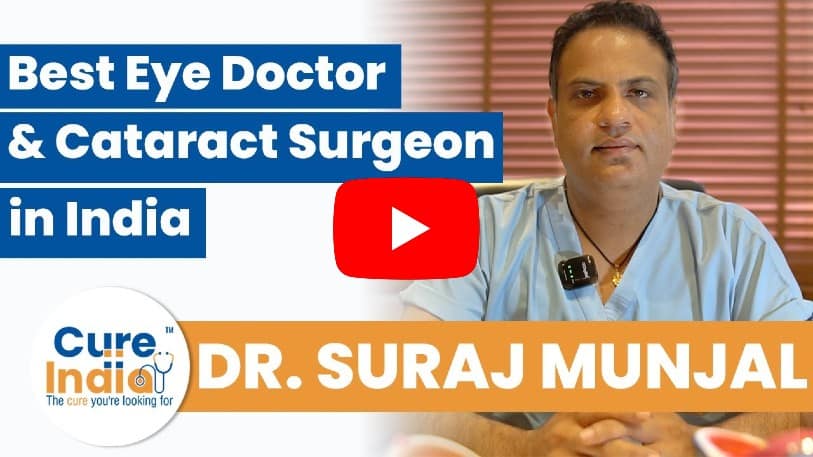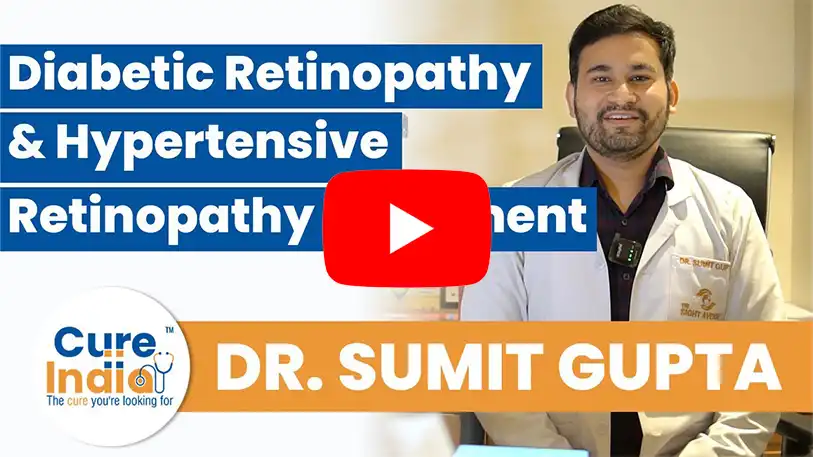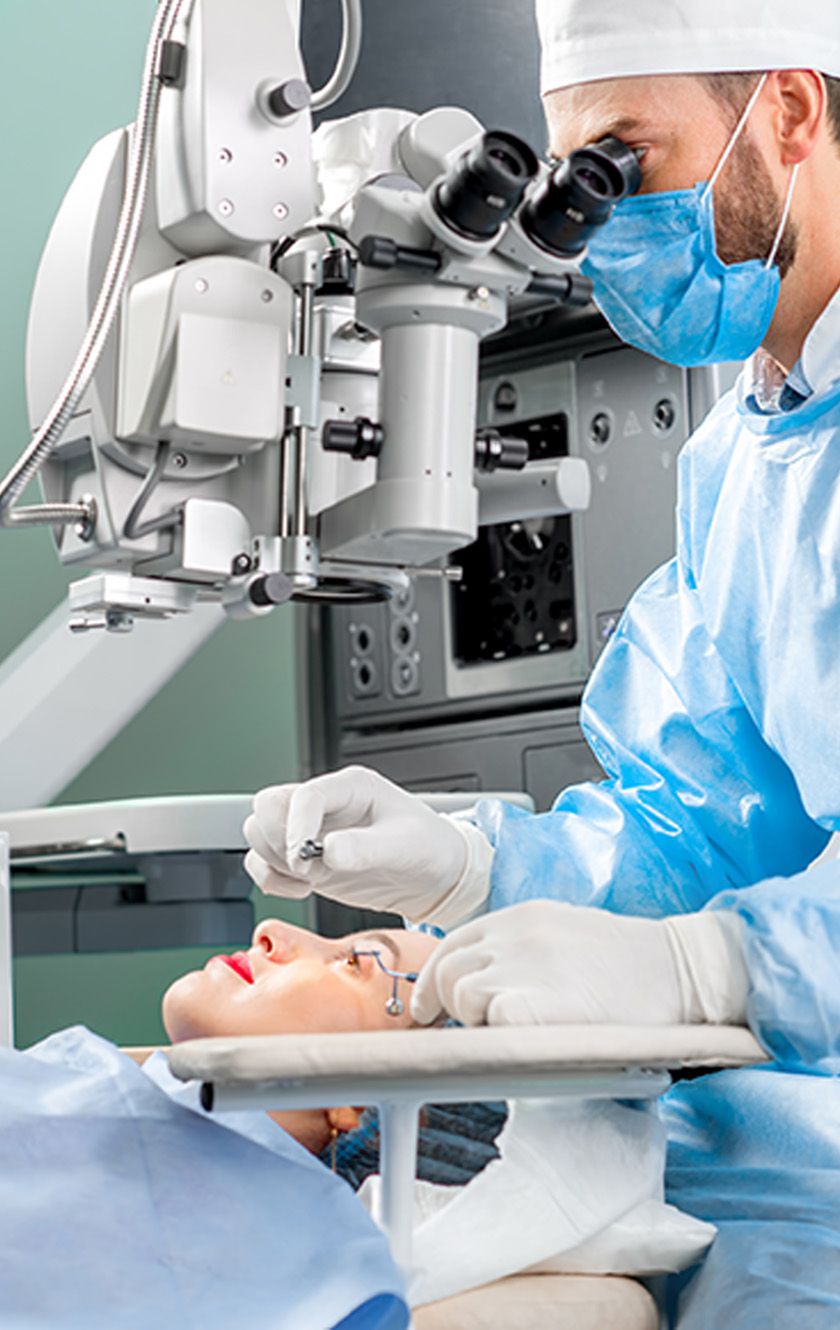

Femtosecond laser cataract surgery, often known as Femto LASIK, is a cutting-edge advancement in the field of refractive surgery for your eyes. Femtosecond LASIK offers a precise and customized technique. It has changed the lives of innumerable people who have been wearing glasses and contact lenses for too long.
Femto LASIK procedure is often referred to as bladeless, all-laser, or blade-free LASIK. The surgeon uses two different types of lasers, to perform the eyesight correction surgery. The excimer laser is used to restructure the stroma or underlying corneal tissue after the very advanced femtosecond laser has created a thin, precise cornea. The flap is subsequently changed without blades to guarantee unobstructed viewing.
During Femtosecond laser cataract surgery, the Femto-second laser is used to create the corneal flap. With significantly lower chances of complications during the process and much thinner flaps, the Lasik procedure is now even safer. It increases the likelihood that the cornea will become more stable over time.
The cornea can be reshaped using one of two primary types of laser surgeries:
Photorefractive keratectomy (PRK): This procedure uses lasers to shape the cornea to treat refractory vision issues precisely. It involves removing the outer layers of the cornea. The 1980s saw the first use of this technique.
Laser in-situ keratomileusis (LASIK): LASIK eye surgery is a useful technique to correct refractive errors. ALK and PRK techniques are essentially combined to reshape the cornea. A little flap is created and lifted during the corneal reshaping process. The flap is replaced after surgery, and it takes time for it to heal.
There are many advantages of Femto laser cataract surgery. Some of them are:
Increased safety: Lasik significantly lowers the risk of issues that could arise from utilizing a corneal flap. Additionally, the chance of infection and inflammation is decreased. Retreatment rates are lowered since there is a more excellent treatable surface for improved stability.
Thinner flap: The corneal flap made possible by the Femto LASIK procedure is so thin and evenly sliced that problems are essentially non-existent. Because more corneal tissue is left behind with these more minor flaps, there is a chance to rectify higher refractive faults as well as promote long-term corneal stability.
Even flap thickness: The surgeon is aware of the form, thickness, dimensions, and capacity of each flap before utilizing the Femto-Lasik. When thinking about treatment for higher refractive errors, this is a crucial concern. A surgeon employing a microkeratome can only see the final appearance of the flap after the incision is completed.
Other advantages: Femto-Lasik laser eye surgery does not require precise measuring of the eyes. Your eyes will develop considerably faster, and you will heal more swiftly. The visual outcomes are superb. The Femto-Lasik laser applies less pressure to the eye during the process. This implies that the patient will feel very minimal pain.
Femto LASIK procedure may be the best option as a vision correction surgery. Depending on the candidate's degree of near-sightedness, the surgeon will decide if they are eligible for surgery.
The following three factors decide if you are an appropriate candidate for Femto LASIK:
Femtosecond laser cataract surgery employs corneal reshaping and internal lens construction in the following cases:
Laser surgery flattens the corneal curvature by removing tissue from the center cornea. It lowers the focusing ability of your eyes. A more extended look or a steep corneal curve causes images to focus in front of the retina. They are then pushed closer to the retina after Femto LASIK surgery.
Femto LASIK surgery can correct astigmatism. The cornea is once more flattened to improve symmetry, but only along the steeper corneal meridian. As a result of this process, images are sharply focused on the retina instead of being warped by light dispersing through an irregularly shaped cornea.
Refractive surgery methods aim to create a steeper cornea to improve your eye's ability to focus. After surgery, images that are focused beyond the retina because of a flat cornea or short eye will be brought closer to, or directly onto, the retina.
The ophthalmologist conducts examinations to map the cornea and program the laser systems. Pupils may be dilated.
The entire procedure takes about 30 minutes of actual laser treatment time per eye.
Eye drops, rest, avoiding eye rubbing, and night eye shields. Healing continues over weeks.
You may return home the day after Femto LASIK surgery. You'll often resume your regular activities in a day or two. However, it can take you a bit longer to recover fully. You'll follow a standard post-operative recovery course under your care and proceed without issues.
Your eyes are sensitive because a laser was just pointed at them. You could feel uncomfortable in the early hours following surgery. In addition to painkillers, your doctor might prescribe eye drops to keep your eyes moist and free of infections.
Your eyes are starting to heal, although they could still hurt and feel sensitive. During this stage, inflammation is typical. After a Femto LASIK operation, you should take a few days off from work. This will allow any post-operative vision problems to go away for you. This encompasses haloes and glares surrounding lights.
Although the flap formed by Femto LASIK is beginning to heal, your eyes still require careful attention to guarantee optimal healing. At this time, make sure you keep your doctor's appointments.
Your eyes are still recovering. You may have clear, sharp eyesight now that the swelling has subsided. However, the tissue surrounding your flap is still mending and painful.
You probably have a clear vision at this stage. You might not experience any side effects or pain while your eyes are still recovering. Maintain your attendance at all follow-up appointments with your physician and follow the instructions provided by your surgical care team for your recovery.
Proficiency is the primary measure when choosing an eye specialist. An accomplished eye specialist assists you with perfect results at a comprehensive cost. CureIndia is associated with highly qualified eye surgeons to make your Femtosecond laser cataract surgery experience worthy.
Dr. Suraj Munjal is the best eye specialist and surgeon in the Delhi NCR region. He has done many refractive surgery and cornea transplants with a wide variety of complicated cases. He also has expertise in all types of LASIK eye surgeries including Femto LASIK eye surgery.

Dr. Suwarn Chetan is an ophthalmologist specializing in LASIK eye surgery. He is one of the top eye specialists in India for cataract eye surgery, refractive eye surgery, and pediatric ophthalmology.?

Dr. Neeraj Sanduja is the most experienced eye surgeon in the Delhi region. His expertise includes LASIK surgeries, diabetic retinopathy, retinal detachment, ocular trauma, retinopathy of prematurity, and macular holes.

Dr. Sumit Gupta is a specialist eye doctor in Gurgugram, India. He has proficiency in Cataract and vitreo retinopathy. He is also an expert in LASIK eye surgery with a high success rate.

SMILE Lasik eye surgery is the most advanced eye surgery done by eye surgeons. Here are the key differences between Femto LASIK, SMILE, and PRK:
| - | Femto LASIK | SMILE CX | PRK |
|---|---|---|---|
| Procedure | Flap cut; tissue removed | Small incision; lenticule extraction | Surface laser ablation |
| Incision size | Big, flap is cut and lifted | Smaller incision compared to LASIK | No flap or incision |
| Procedure time | Longer, around 10-20 minutes | Shorter, around 10 minutes | Shorter, less than 10 minutes |
| Healing time | 1 week for vision to stabilize | 1-2 weeks for vision to stabilize | 3-4 weeks due to epithelial regrowth |
| Tissue and nerve damage | Flap cut leads to more tissue damage and slowing of nerve regrowth | Less tissue damage especially in the epithelium | More nerve damage on the surface, affecting healing |
| Visual recovery | Faster recovery within 1 week | Slightly more prolonged recovery | Can take 3-4 weeks for vision to stabilize |
Femto LASIK price ranges from $2,500 - $5,500 per eye in the United States. However, in Australia, the average out-of-pocket cost for Femto LASIK cost ranges from around 4,190-8,820 AUD per eye. The price can vary based on:


Get the Eye color you've always dreamed of
Connect Today
Opt for successful eye color change surgery
Plan Surgery
Remove glasses with SMILE LASIK
Get Cost